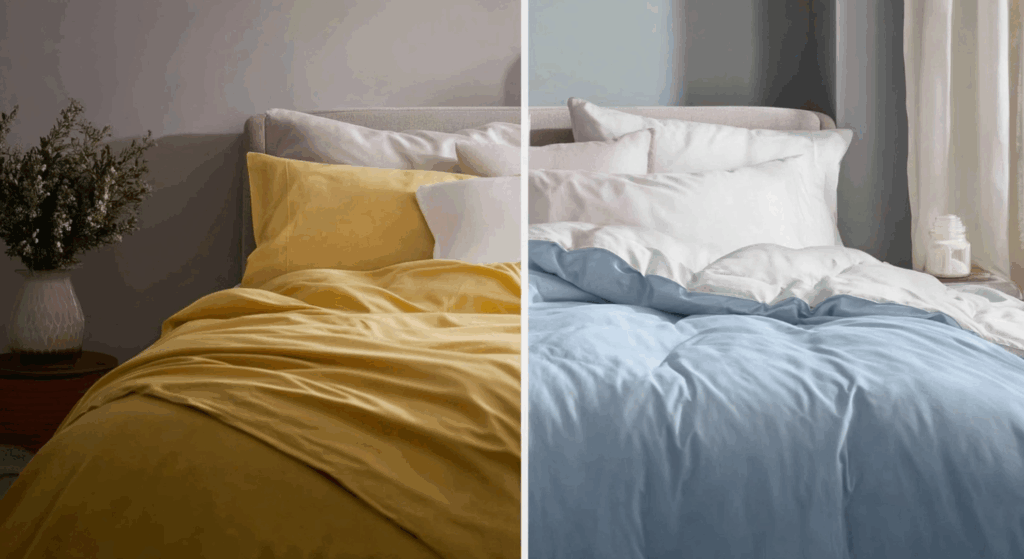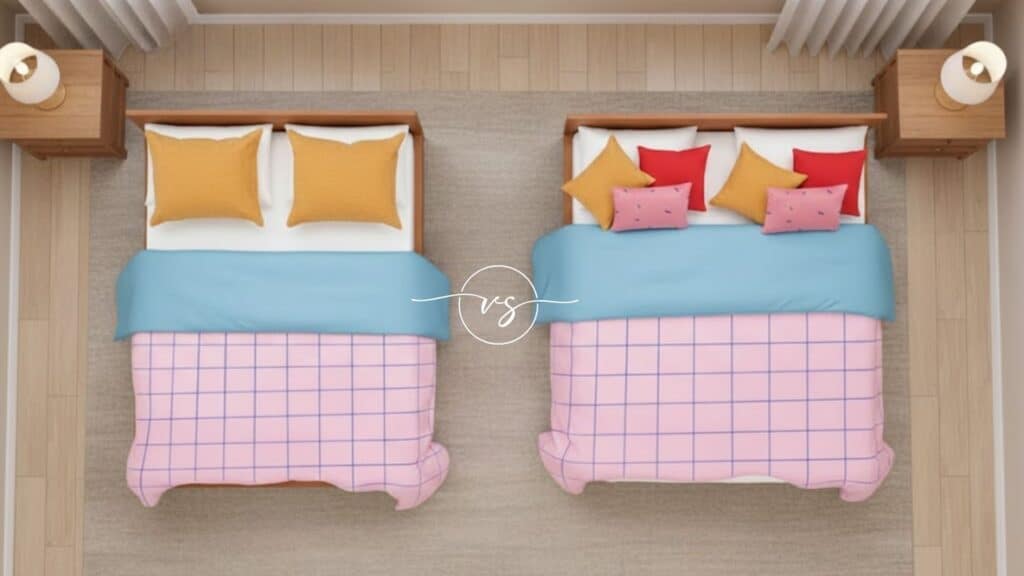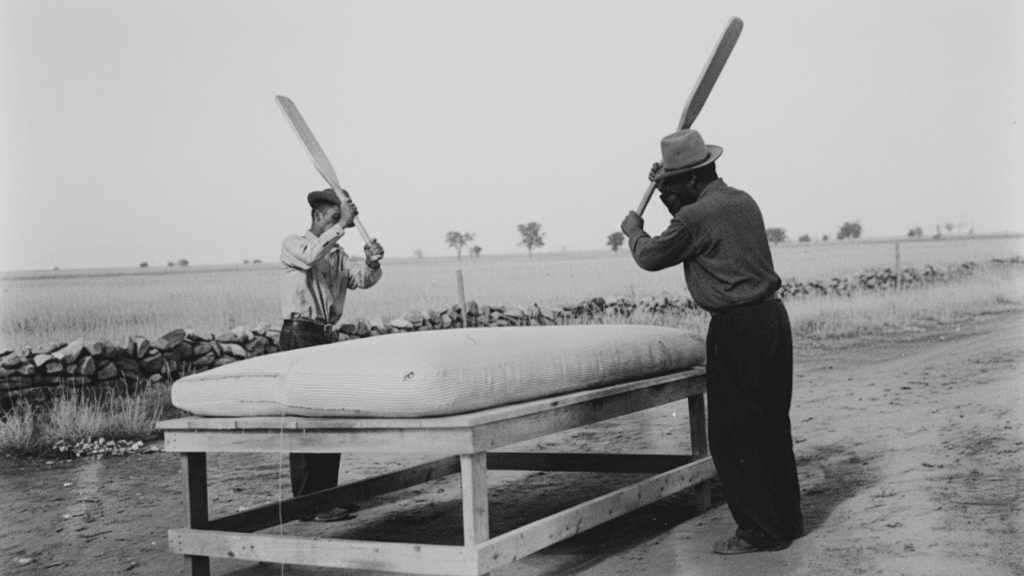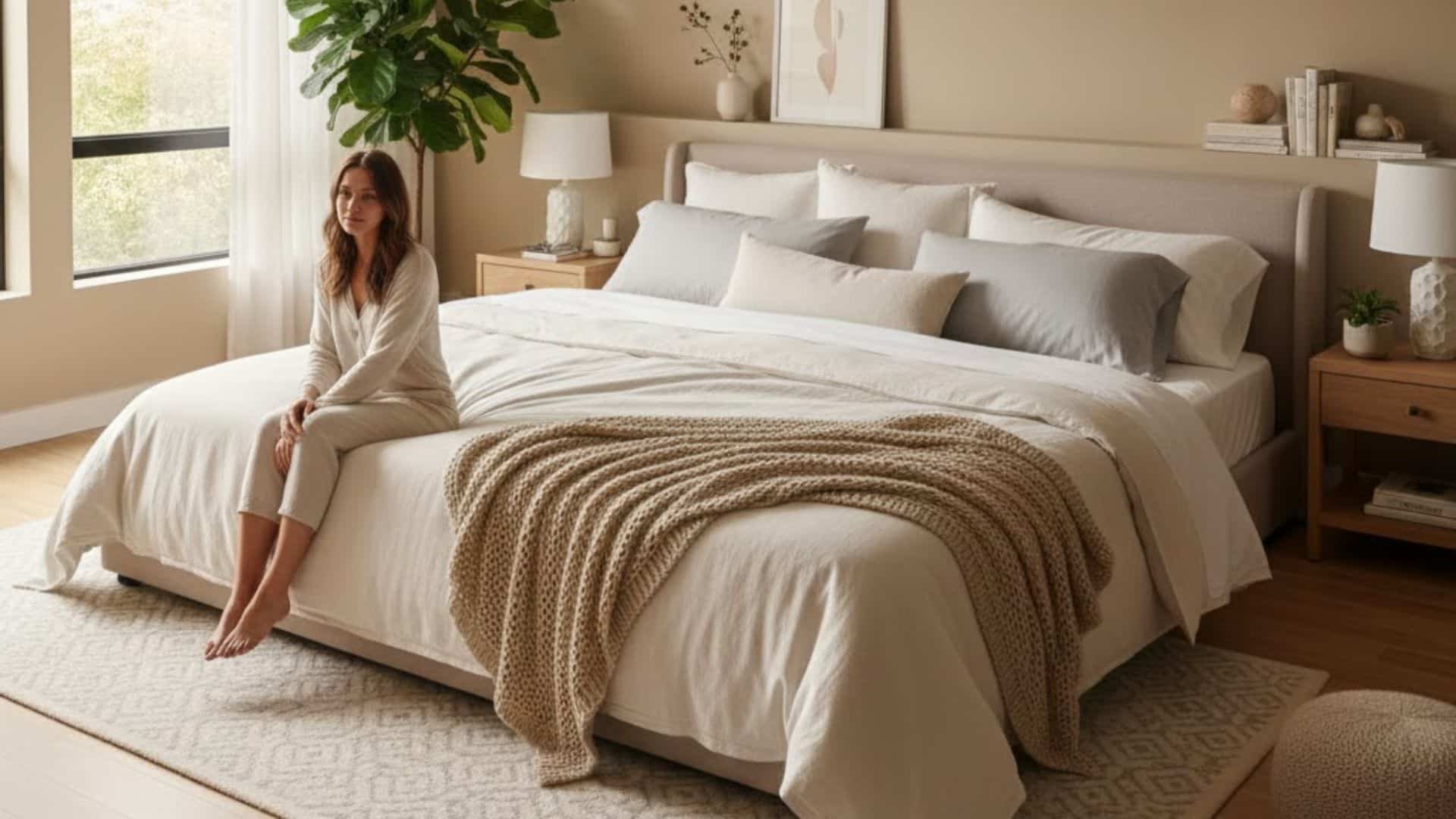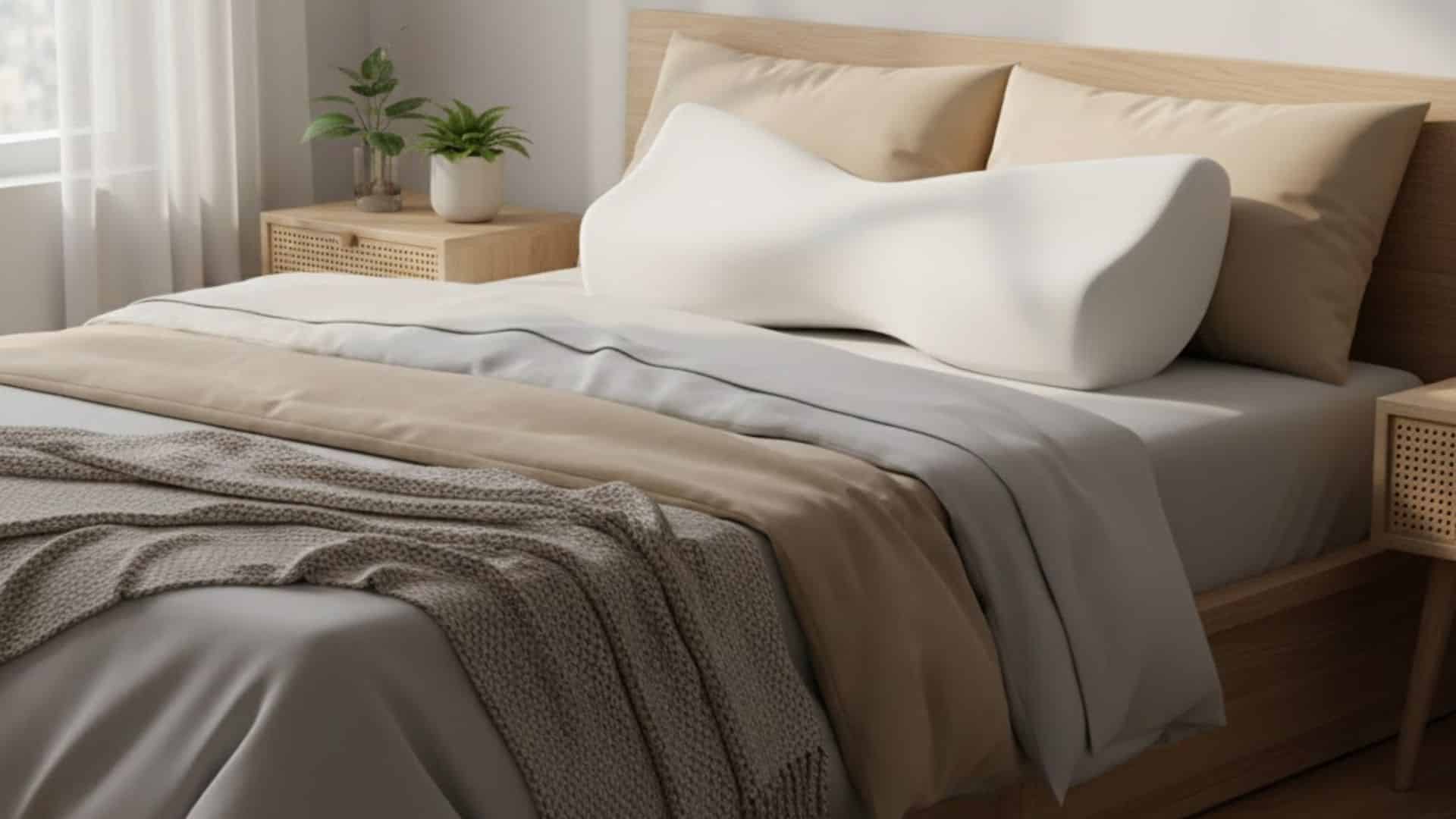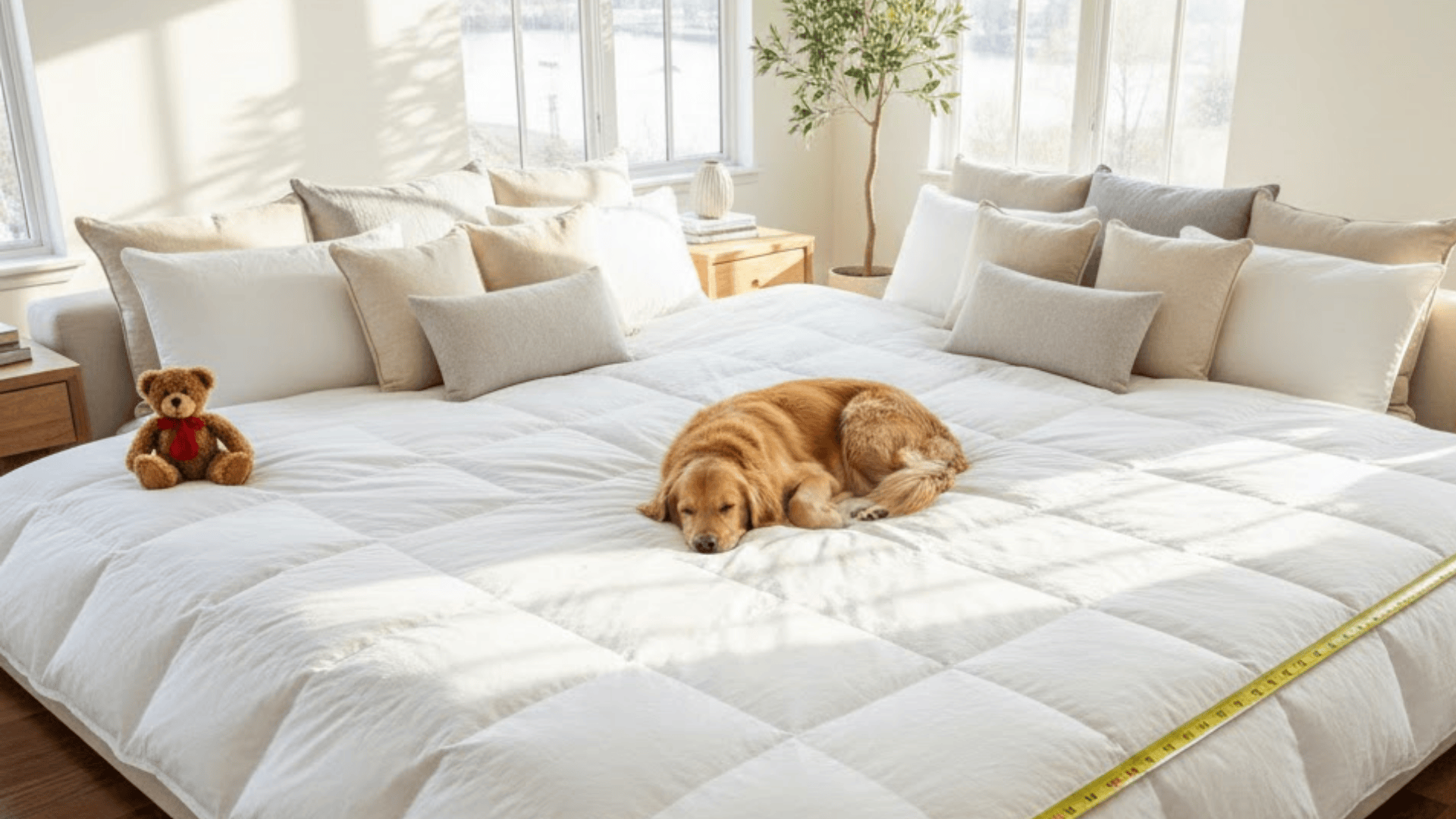I used to think all cotton sheets felt the same, until I slept on ones that left me sweaty or too warm. That’s when I learned the real difference between sateen vs. percale.
It’s not just about the fabric, but how it’s made. That small detail changes how the sheets feel, breathe, and last.
Now you’re probably wondering which one fits your sleep habits. This guide breaks down what makes each fabric type different: feel, warmth, breathability, and care.
You’ll learn how they hold up over time and which one suits your needs better. If you’ve been stuck choosing between these two, this will give you clear, simple answers to help you decide with confidence.
Why Sheet Texture Feels So Different?
When you compare percale and sateen sheets, the main difference is how the threads are put together. This affects how the sheets feel and look.
Percale sheets use a one-over-one-under pattern. That gives them a smooth, crisp feel, kind of like a dress shirt.
Sateen sheets use a one-over-three-under pattern. That means more thread is on top, so the sheet feels softer and a bit warmer.
Even though both are made of cotton, the way they’re made changes everything. One feels cooler and more breathable. The other feels smooth and cozy. Knowing this helps you pick the one that feels best for how you sleep.
Sateen vs. Percale Sheets: How Are They Different?
When you’re choosing new sheets, you’ll often see the words sateen and percale. They’re both types of cotton, but they feel very different. That’s because of the way the threads are put together.
Let’s see what makes each one special and how to pick the one that feels right for you.
What’s the Big Deal With How Sheets Are Made?
Both sateen and percale use cotton, but the thread pattern changes how they feel, look, and work.
Think of percale like a clean, crisp cotton shirt; light and cool.
Think of sateen like a soft, silky blouse; smooth and a little shiny.
The way threads go over and under each other is the key difference. That small detail changes a lot: the texture, how warm the sheets feel, and how well they breathe.
Let’s look at each one more closely.
What is Percale?
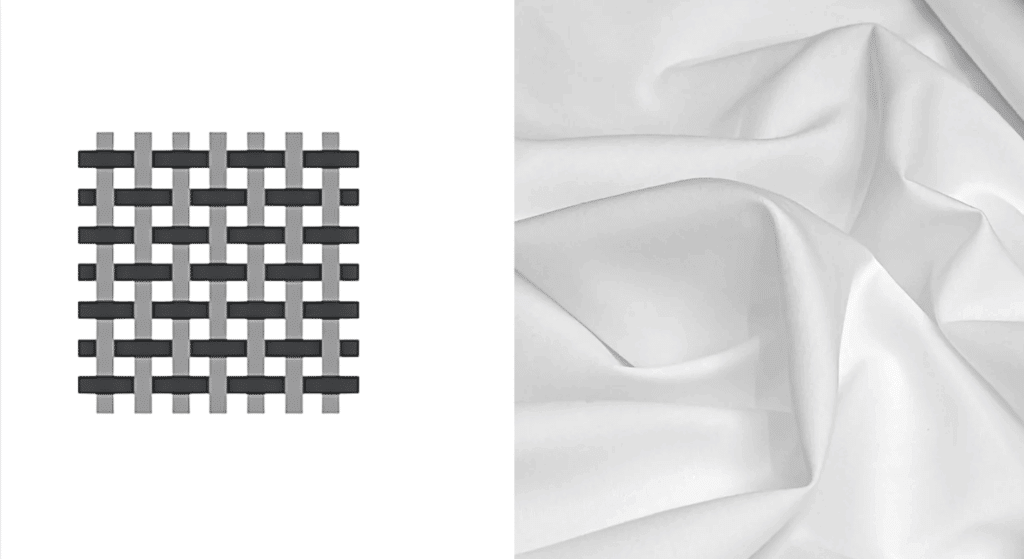
Percale sheets are made with a simple pattern: one thread over, one thread under. This makes the fabric light, breathable, and crisp. The surface feels smooth but not slippery, with a flat look that isn’t shiny. If you’ve ever worn a freshly ironed cotton shirt, that’s what percale feels like—cool and clean.
Because it doesn’t cling to your body, percale is a great pick for hot sleepers. It lets air flow through and helps keep you cool during the night. That’s why it’s often used in warmer places or during summer.
Who should use it: If you sleep hot, sweat at night, or live in a warm area, percale sheets are a smart choice. If you like a clean, crisp feel when you slip into bed, percale will work well for you.
Pros:
- Feels cool and fresh
- Breathes well and doesn’t trap heat
- Lasts a long time with good care
- Gets softer after each wash
Cons:
- Tends to wrinkle easily
- May feel too stiff for some people at first
- Not warm enough for winter or cold rooms
Percale is simple, strong, and made for people who want a cool, comfy sleep.
What is Sateen?
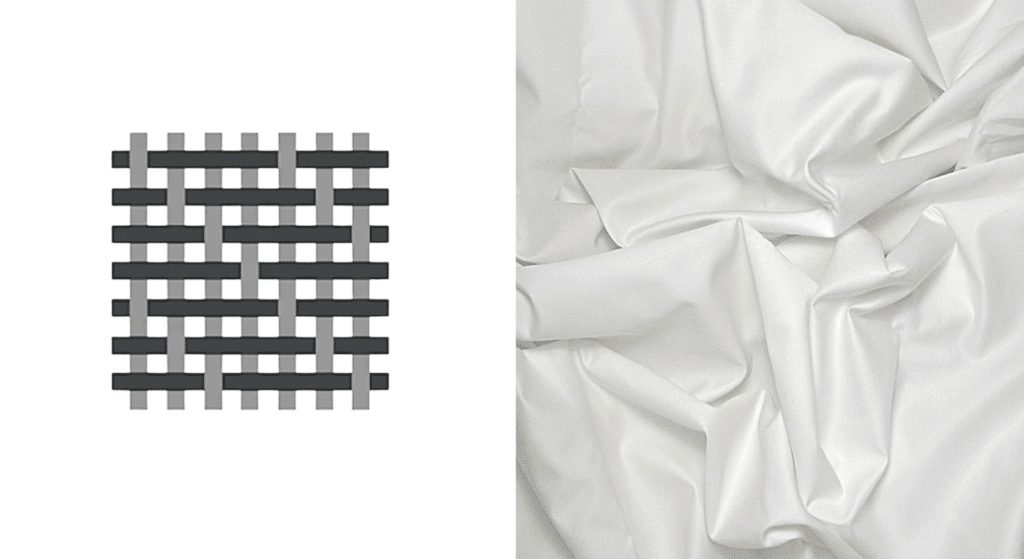
Sateen sheets are made using a one-over, three-under thread pattern. This means that more of the surface is covered with thread, which gives the fabric a soft, smooth feel and a bit of a shine. It’s thicker than percale and feels warmer when you touch it.
If percale feels like a crisp shirt, sateen feels more like a silky blouse or a soft robe. It’s cozy, smooth, and has a bit of weight to it. Because it holds in warmth, sateen is perfect for cool nights, cold bedrooms, or wintertime. It also feels soft right away, even before washing.
Who should use it: If you get cold easily or want your bed to feel soft and warm as soon as you get in, sateen might be your best bet. It’s also a good option if you don’t like the crisp feel of percale.
Pros:
- Feels warm and cozy
- Soft right out of the package
- Doesn’t wrinkle as much as percale
- Has a smooth, gentle shine
Cons:
- Can feel too hot in the summer
- Picks up lint and pet hair more easily
- Might not last as long as percale with heavy use
Sateen is soft, warm, and perfect for cooler sleeping.
Comparing Percale vs. Sateen: Quick Comparison
If you’re still unsure which sheet type fits your sleep style, here’s a side-by-side look at the key differences. This quick comparison makes it easier to choose what works best for you:
| Feature | Percale | Sateen |
|---|---|---|
| Thread Pattern | One-over-one | One-over-three |
| Feel | Crisp, cool | Soft, smooth |
| Look | Matte, flat | Slight shine |
| Weight | Light and breathable | Heavier and warmer |
| Best For | Hot sleepers, warm climates | Cold sleepers, cool rooms |
| Wrinkle Level | Wrinkles easily | Fewer wrinkles |
| Durability | Long-lasting | May wear out faster with heavy use |
| Care Needs | May need ironing or quick folding | Gentler care to avoid pilling |
This table gives you a clear look at how percale and sateen perform. Now you can match your choice to what matters most—coolness, softness, or easy care.
Percale vs. Sateen: How to Choose Based on Your Needs?
Picking between percale and sateen depends on what kind of sleeper you are and what your daily life looks like. If you’re a hot sleeper or live in a warm place, percale is likely the better choice. It’s cool, crisp, and lets air flow through.
For cold sleepers, sateen is a better fit. It feels warm and soft right away, which makes it great for winter or cooler rooms.
If you have sensitive skin, both types can work, but sateen may feel gentler because of its smooth finish. Think about your laundry habits, too. Percale wrinkles more and may need folding or ironing to stay neat. Sateen looks smoother out of the dryer but may wear out faster if washed roughly.
Also consider your room’s temperature year-round. Matching your sheets to your climate can make a big difference in how well you sleep.
Understanding Thread Count and Fabric Style Together
Many people think a higher thread count always means better sheets, but that’s not true. What matters more is how the threads are put together.
The pattern of the threads, like in percale or sateen, has a bigger impact on how the sheets feel and work. Percale is light and crisp. Sateen is smooth and warm. So, even if two sheets have the same thread count, they’ll feel very different because of the way they’re made.
Thread count does play a role, though. In general, a count between 200 and 400 is great. It’s soft, strong, and breathable. But once you go much higher, like 800 or more, the fabric can get heavy and less airy, especially in sateen.
Bottom line is don’t just look at the number. Look at the fabric style first. A good sheet is about balance, not just high numbers.
How Cotton Types Change the Feel of Your Sheets
The type of cotton in your sheets affects how they feel, how long they last, and how much they cost. Here are the main types:
Egyptian cotton is made from long fibers, which gives the fabric a soft and smooth feel. It’s very strong and holds up well over time. These sheets are often the most expensive because of their high quality.
Pima cotton also uses long fibers, making it soft and durable. It’s mostly grown in the U.S. and is known for being a little more affordable than Egyptian cotton while still offering great comfort.
Supima cotton is a special type of Pima cotton that’s even higher in quality. It’s branded and grown only in the U.S. It feels soft, lasts a long time, and keeps its color well.
Organic cotton is grown without harmful chemicals, making it better for sensitive skin and the environment. It may feel a bit rougher at first, but it gets softer after each wash.
Cotton-poly blends mix cotton with polyester, which makes the sheets more affordable and easier to care for. They wrinkle less and dry faster, but they don’t breathe as well and can feel less natural. In percale, they lose the crisp texture, and in sateen, they can feel extra shiny or slippery.
How Each Fabric Holds Up Over Time
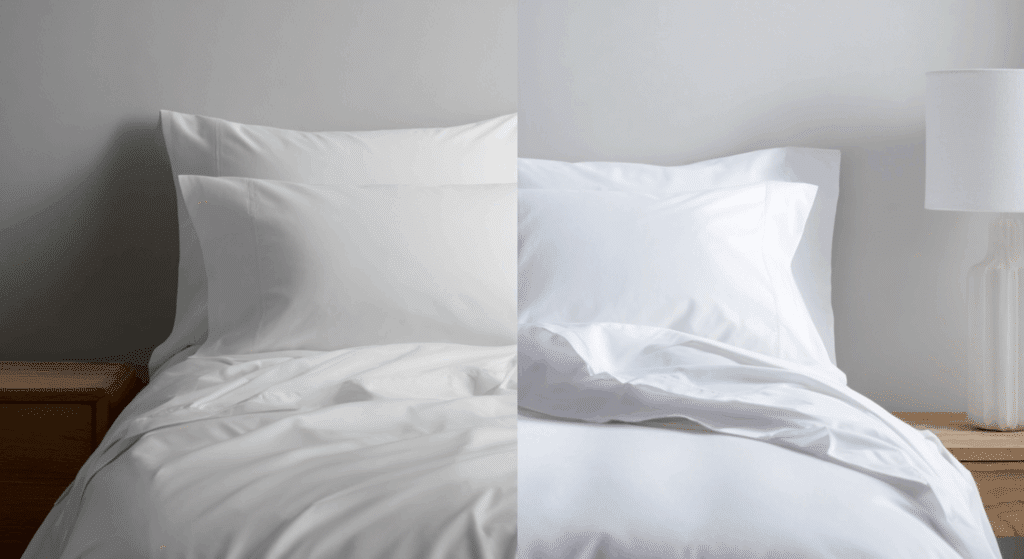
Sheets may feel great when they’re brand new, but what really matters is how they hold up after weeks, months, and even years of use. Before picking between percale and sateen, it helps to know what changes once you start sleeping on and washing them regularly.
1. After Washing
Right after a few washes, you’ll notice how each fabric changes.
- Percale starts off a little crisp but gets softer with every wash.
- Sateen feels soft from the beginning, but can pill (form fuzz balls) more quickly.
So while percale improves over time, sateen may need more care to keep its smooth feel.
2. Long-Term Use
Thinking about which one lasts longer? Here’s how they compare:
- Percale is tough and usually lasts longer, even with regular use.
- Sateen may wear out faster, especially if not washed gently.
If you’re after something that holds up over the years, percale is a safer choice.
3. Care and Maintenance
When it comes to daily care, these sheets behave a little differently.
- Percale wrinkles more easily, so it may need folding or ironing after drying.
- Sateen stays smooth with fewer wrinkles, which saves you time.
That means sateen looks neater out of the dryer, but percale may take more effort to keep tidy.
4. Dryer Settings
How you dry your sheets also makes a difference.
- Percale can handle normal heat and stays strong.
- Sateen should be dried on low heat to protect its softness and prevent damage.
Treating sateen gently helps it stay soft and smooth longer.
In the end, percale gets better with time and lasts longer, especially for those who don’t mind a bit of ironing. Sateen feels great right away, but it needs softer care to stay that way. Choose the one that fits your sleep style—and how much care you’re willing to give.
What People Love About Percale and Sateen
People who have tried both percale and sateen sheets often share strong opinions in reviews, YouTube videos, and forums like Reddit, YouTube bedding reviews, and shopping sites like Amazon.
Hot sleepers usually are on Percale’s side. Many say it stays cool throughout the night and doesn’t stick to the skin. One Reddit user said, “It’s the only sheet that doesn’t make me sweat at night.”
On the other hand, cold sleepers go with sateen because it feels warmer and softer. A reviewer on YouTube mentioned it felt “cozy and smooth from night one.”
Wrinkle-haters often complain about percale, calling it “too much work” because it creases easily. Sateen, however, comes out of the dryer looking smoother.
Some long-term users say sateen doesn’t last as long and pills over time.
Care Tips for Sateen and Percale Sheets
Taking good care of your sheets helps them stay soft, smooth, and last longer. While both percale and sateen are made from cotton, they need slightly different care to keep them in top shape. Here is how you can do that:
- Wash in cool or warm water to protect the cotton fibers. Avoid hot water, especially for sateen.
- Use a gentle, liquid detergent without bleach or harsh chemicals.
- Avoid fabric softeners, which can leave a coating that weakens fabric over time.
- Dry on low heat or hang-dry when possible, as high heat can cause shrinkage and damage, especially for sateen.
- Remove sheets promptly from the dryer to reduce wrinkles in percale.
- Fold neatly or iron if needed, especially for percale, which wrinkles more easily.
- Rotate between two or more sets of sheets to give each set time to rest and reduce wear.
By following these tips, your sheets will not only feel better but also last longer and keeping your bed clean, comfy, and looking fresh.
Conclusion
I didn’t realize how much the right sheets could change my sleep until I took the time to learn about sateen vs. percale. Once I understood how each one felt, how they handled heat, and how they held up over time, picking the right set became a lot simpler.
It wasn’t about choosing the “best,” it was about choosing what worked for me.
Now it’s your turn to think about what fits your sleep habits, your space, and your routine. You’ve got the info—cool and crisp or soft and cozy, now you know what to look for.
Remember, comfort isn’t one-size-fits-all. If you want more down-to-earth tips like this, take a look at other blogs on the website and keep learning as you build your perfect sleep setup!


